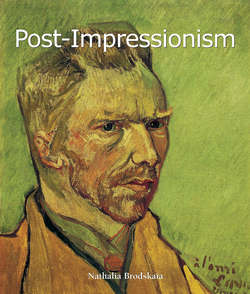Читать книгу Post-Impressionism - Nathalia Brodskaya - Страница 4
На сайте Литреса книга снята с продажи.
Introduction
Post-Impressionism and its Contributions
ОглавлениеThe era of Post-Impressionism was the time of lone painters; only a very small number of them got together, and then only rarely. The great specialist of Impressionism, John Rewald, used the ingenious phrase of Émile Verhaeren: “There is no longer a unique school, he wrote in 1891, there are a few groups, but even they break up constantly. All these movements remind me of moving geometrical pieces in a kaleidoscope, which separate suddenly only to better come together again. They move apart then get together, but, nevertheless, stay in the same circle – the circle of the new art.”[3]
They didn’t share the same opinion about art, nature or painting style. The only thing the painters had in common was the impression that Impressionism left on them: none of them could have worked in this manner, working as if Impressionism had not existed. All these artists faced the same sad fate – not one of them had a hope of ever entering the Salon and showing his work to the public. Impressionists had shown them a possible way: they created their own exhibitions, excluding from it those who were not with them. They were all very different: some did not have the necessary level of professionalism according to the jury’s rules; some shocked the public by being too bold in their style, too negligent or using colours which were too intense. A new exhibition opened in 1884 in Paris: Le Salon des artistes indépendants. The new Salon was a solution for everyone, because there was no jury and nobody was selecting works for the exhibition. Each painter could show whatever he wanted. The only condition was the number of works being shown, that number changed year after year. Georges Seurat, a Neo-Impressionist, whose unusual position made him undesirable for official exhibitions, took a very active part in organising the Salon des Indépendants. The Independents proclaimed what became the significant achievement of the Post-Impressionism era. According to the ‘Sunday’ painter Henri Rousseau, “Freedom to create must be given to initiators”.[4] Only two years after the last Impressionists exhibition, each painter had the possibility of showing his work to a wide audience.
Although it was often hard to discover a great talent among hundreds of pieces shown there, it was that Salon that gave the opportunity to such uneducated artists as Henri Rousseau to discover the art scene. School education ceased to be an essential quality for painters; Vincent van Gogh and Paul Gauguin were also persistent, self-taught painters. Paul Cézanne – ‘the Impressionist’ —, who was not satisfied with Impressionists’ style, also chose his own special path; Henri de Toulouse-Lautrec, even though he had received classical education, decided to choose a disapproved path. The work of all these painters was conceived in the era of Post-Impressionism and their lives, surprisingly, ended with the end of the century: Van Gogh died in 1890, Seurat – in 1891, Lautrec – in 1901, Gauguin – in 1903, Cézanne – in 1910, the Douanier Rousseau – in 1910.
3
Émile Verhaeren, “Le Salon des indépendants”, L’Art moderne, April 5, 1891
4
Le Douanier Rousseau, Paris, 1985, p. 262
